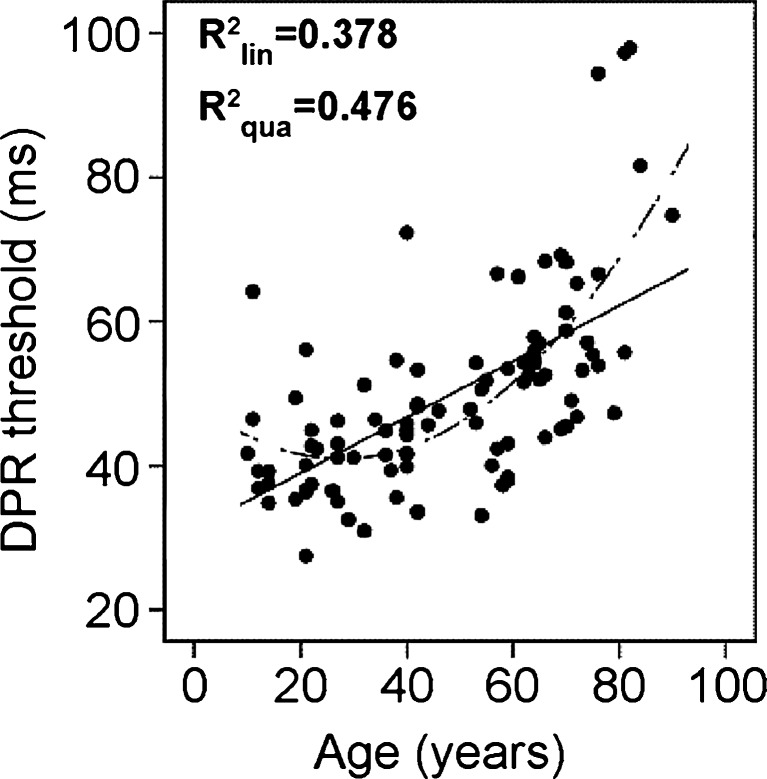Fig. 4.
Double-pulse resolution (DPR) thresholds as a function of observer age. The lines represent first-order (solid) and second-order (dashed) regression. The linear curve estimate accounted for 37.8% of variance, the second-order regression for 47.6%. For the age range of 30–60 years, there was no age-related change (variance accounted for by age: linear, 0.06%; second order, 0.4%). For observers between 60 and 90 years of age, linear regression accounted for 26.7% and quadratic regression for 29.2% of variance (i.e. > 70% interindividual variance remained unaccounted for in that age range)

